Cooking with a Blackstone Griddle can be a great way to prepare delicious meals quickly and easily. But how hot does a Blackstone Griddle get? This is an important question when considering which type of grill to use, as it will determine the types of dishes that can be cooked on it and the overall cooking time. In this article, we will look at what temperature a Blackstone Griddle reaches and discuss some tips for getting the most out of your griddle cooking experience. Read on to find out more about how hot a Blackstone Griddle gets!
About Blackstone Griddle
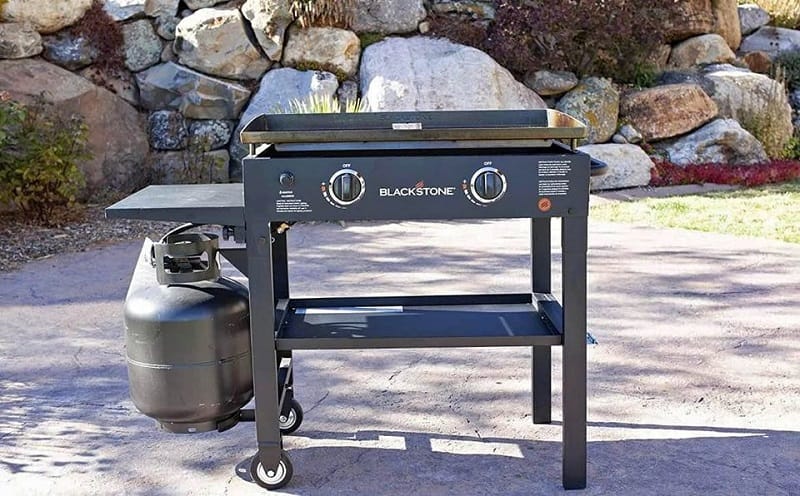
As a lover of cooking outdoors, I can tell you that the Blackstone Griddle is an absolute game-changer. This versatile cooking surface has completely revolutionized the way I cook and entertain outdoors. The Blackstone Griddle is a flat-top grill that allows you to cook everything from pancakes to burgers to stir-fry on one surface.
One of the things I love about the Blackstone Griddle is how easy it is to use. The griddle heats up quickly and evenly, so you don’t have to worry about hot spots or uneven cooking. The griddle is made from high-quality, durable materials that withstand years of abuse.
Another great thing about the Blackstone Griddle is how versatile it is. You can cook just about anything on it, from breakfast foods like eggs and bacon to lunch and dinner favorites like burgers, hot dogs, and steak. And because the griddle has a large cooking surface, you can cook for a crowd without worrying about running out of space.
Cleaning the Blackstone Griddle is also a breeze. The griddle surface is non-stick, so you don’t have to worry about food sticking and burning onto the surface. And when you’re done cooking, wipe down the grill with a damp cloth, and you’re good to go.
What Is The Temperature Range Of A Blackstone Griddle?
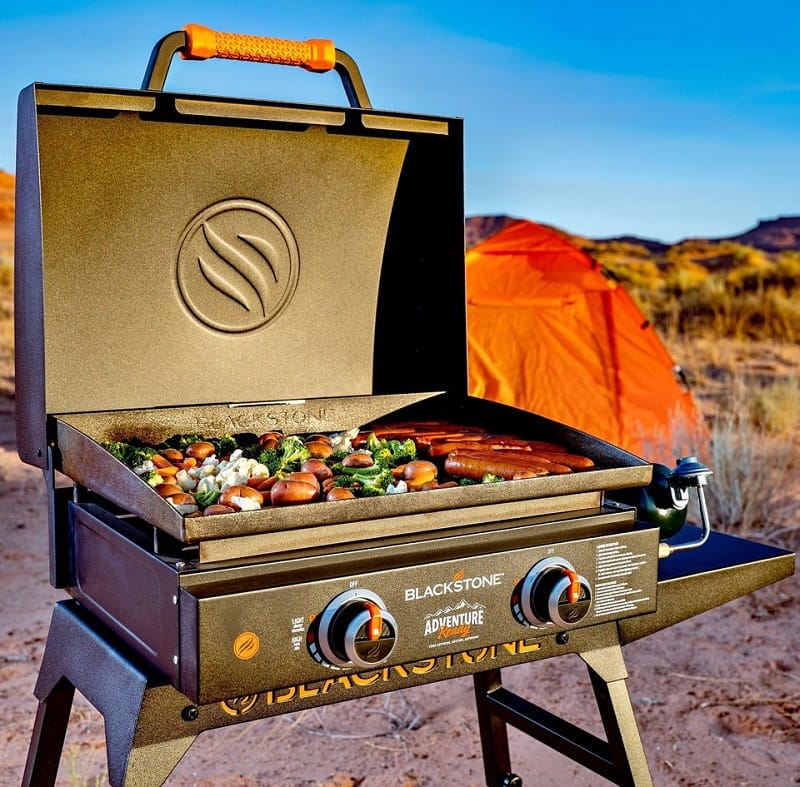
The temperature range of a Blackstone griddle can vary depending on the model used and the surrounding weather conditions. When set on high, Blackstone griddles can reach temperatures ranging from 500 to over 700 degrees Fahrenheit. It is important to monitor the temperatures of the griddle as you cook to prevent overcooking, undercooking, or burning the food.
Griddles have heat zones, the specific areas on the griddle surface where more heat concentrates. The areas directly above the gas tubing that emits flames are hotter, while those around the corners and edges are cooler. Identifying the hotter and colder areas on your cooktop allows you to cook more efficiently, whether searing meat, sautéing vegetables, or thickening sauces.
The time it takes for a Blackstone griddle to heat up can also vary depending on the model and the size of the cooking surface. A propane-powered Blackstone griddle takes an average of 8 to 9 minutes to reach its maximum temperature from an off position. Windy weather conditions can affect the temperature of a Blackstone griddle, as the high wind can cause burners to blow out or extinguish the grill’s flames.
How Hot Does A Blackstone Griddle Get?
Blackstone griddles are known for their ability to produce high temperatures in a short amount of time. The research found that a Blackstone griddle’s hot temperature can rise over 600 and even 700 degrees Fahrenheit. The temperatures vary depending on the model and surrounding weather conditions.
It is important to note that every gas-powered griddle has heat zones where more heat concentrates. The areas of the cooking surface directly above the gas tubing that emit flames are hotter, while those around the corners and edges are cooler. A propane-powered Blackstone griddle takes 8 to 9 minutes to reach its maximum temperature from an off position.
The size of the cooking surface and the outside weather conditions can affect the time it takes to heat the griddle. However, using an infrared or LED food thermometer to monitor the temperatures of the griddle as you cook continually is essential to prevent overcooking or undercooking of the food.
In conclusion, Blackstone griddles can reach over 650 F under ideal conditions, but under real-life conditions, it can get pretty close to that, and maybe even beyond, according to some users. The outside weather conditions will affect the griddle’s performance.
Read more:
What Is The Recommended Temperature Range For Griddle Cooking On A Blackstone Griddle?
When it comes to griddle cooking on a Blackstone griddle, it is important to know the recommended temperature range for different ingredients. Thanks to its multiple burners, cooking on low, medium, and high heat simultaneously on a Blackstone griddle is possible.
High heat is best for thick and fatty cuts of meat such as pork shoulder, brisket, chicken thighs, and short ribs, which require slow cooking to break down the connective tissue and fat. On the other hand, lean cuts of meat such as chicken breast, tenderloin, skirt steak, and flank should be cooked on medium heat to avoid drying them out. Seafood requires a delicate approach, with delicate seafood needing low heat and fish cooked whole or in pieces on medium heat.
While the temperature on a griddle will constantly fluctuate, one can gauge it by how the food reacts. Preheating the griddle on low is recommended to avoid warping, and an instant-read thermometer can help get an accurate temperature reading. Knowing the suitable temperature range for each type of food can help you prepare a perfect and delicious meal on your Blackstone griddle with precise temperature control.
How Quickly Does A Blackstone Griddle Heat Up?
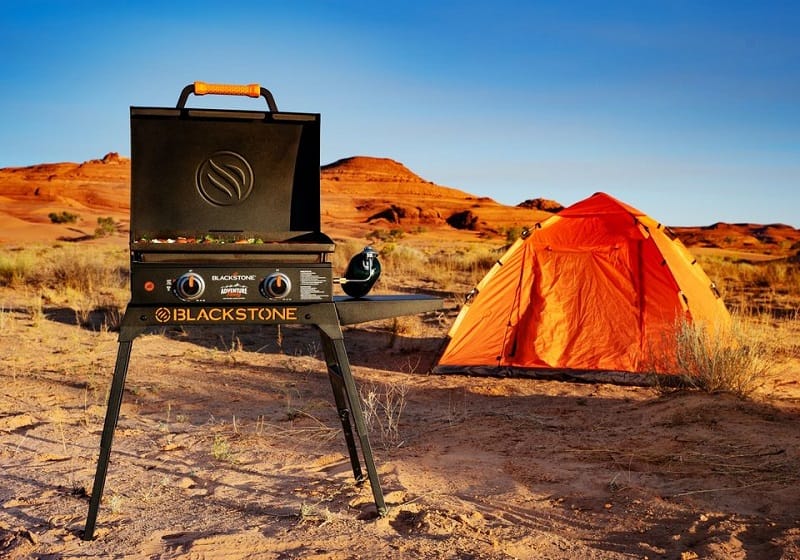
A Blackstone griddle is a popular appliance for cooking a variety of foods. Understanding how quickly it heats up is essential to ensure food is cooked properly. Depending on the model, a Blackstone griddle can reach temperatures between 500°F to 640°F in approximately 8 to 9 minutes after ignition. However, external factors such as weather conditions and the griddle size can also affect heating time.
It is crucial to understand the heat zones of the griddle surface to cook food efficiently. The hotter areas are typically found over the flames of the gas tubing, while the cooler areas tend to be at the edges and corners. Observing the cooking process and using an inferred food thermometer are effective ways to identify these heat zones. A Blackstone griddle may experience low heat or blow out the burner in windy conditions.
How Hot Does the 17-inch Blackstone Griddle Get?
According to Blackstone Products, the 17-inch Blackstone griddle can reach temperatures up to 650°F under ideal conditions, although it’s very rare to need to cook at that high of a temperature. Most foods can be cooked on a griddle between 300°F (Low Medium) and 375°F-400°F (Medium-High). This is because the Maillard reaction, which browns food on the outside, occurs when food comes into contact with temperatures between 280°F-330°F, intensifying flavors.
There are two common griddle cooking methods: searing and sautéing. Searing is best for thicker proteins like steaks and burgers, while sautéing is better for thinner cuts of meat and vegetables. Flipping the food appropriately is crucial to achieving a flavorful crust and desired doneness. Sweating is a technique where vegetables are slowly cooked over lower heat to draw out flavors without browning, which is effortless on a Blackstone griddle.
How Hot Does a 22-inch Blackstone Griddle Get?
Under ideal conditions, the gas griddle can reach over 650°F; however, most foods can be cooked to perfection between 300°F (Low-Medium) and 375°F-400°F (Medium-High). The Maillard reaction, responsible for browning food on the outside, occurs between 280°F-330°F, making food more delicious.
The most common cooking methods are searing and sautéing, with the former used for thicker foods and the latter for thinner cuts of meat and vegetables. Sweating, or slowly cooking vegetables over lower heat to draw out flavors without browning, is another useful technique on the Blackstone griddle.
Weather conditions, including ambient air temperature, wind, and sunlight, can affect the griddle’s temperature. Therefore, it is essential to use a thermometer to determine the temperature on the cooking surface before firing up the griddle in different weather conditions.
How Hot Does the 28-inch Blackstone Griddle Get?
According to factual data from Blackstone Products, the gas griddle can reach over 650F under ideal conditions. However, cooking at such high temperatures is unnecessary for most dishes. The best temperature range for consistently good results is between 300F (Low Medium) and 375F-400F (Medium-High). The Maillard reaction, which browns food, occurs when food comes into contact with temperatures between 280F-330F.
Searing and sautéing are the two most common griddle cooking methods, with slight differences. When cooking thicker foods, it is only necessary to flip or turn your food once, and using an instant-read thermometer is the only accurate way to know how long your food needs to cook before flipping. Additionally, sweating food is a technique where vegetables are slowly cooked over low heat to draw out flavors without browning. The Blackstone 28-inch griddle has heat zones and the hottest areas directly above the gas tube and flame.
How Hot Does the 36-inch Blackstone Griddle Get?
According to official Blackstone support, the gas 36-inch griddle can reach up to 560 degrees Fahrenheit in their testing environment. However, real-world conditions may vary due to factors such as altitude, outside ambient temperature, and the size of the griddle.
Real-world testing has shown that the Blackstone 36 reached 560F, which is slightly lower than the official support from Blackstone’s testing environment. The E-Series Electric Griddle from Blackstone has a digital temperature controller from 100-500 degrees, and real-world testing is being conducted to compare its maximum setting to actual temperatures. The testing conditions include the altitude, which affects propane consumption; the season, which is early June with sunny weather and temperature of 88 degrees Fahrenheit; and the griddle sizes tested, the Blackstone 28, Adventure Ready 17, and the E-series Electric Griddle.
The griddle enthusiast recommends using an infrared temperature gun to find out the griddle’s heat zones where more heat concentrates and to cook almost anything between 300F (Low-Medium) and 375F-400F (Medium-High) with consistently wonderful results. The Maillard reaction occurs when food comes into contact with temperatures between 280F-330F, making food more delicious and intensifying the flavors as it cooks.
The two most common griddle cooking methods are searing and sautéing, and flipping depends on the thickness of the food, Use an infrared temperature gun to know the accurate cooking time before flipping.
What Safety Precautions Should Be Taken When Using A Blackstone Griddle At High Temperatures?
When using a Blackstone Griddle at high temperatures, it is important to take necessary safety precautions to avoid accidents and injury.
- Before cooking, always check for leaks in the propane tank, including the hose, using a soap and water mixture. If bubbles appear, the propane tank should be shut off, and the fire department should be contacted.
- Grease buildup is also a safety concern, so cleaning the griddle after each use is recommended, and not squirt too much grease at once.
- Avoid cooking near flammable materials, including walls, fencing, trees, and ceilings.
- It is advisable to store the griddle in a well-ventilated room with a mild temperature, away from the kitchen or bathrooms.
- To maintain the flat top of the griddle, it should be seasoned regularly with oil to protect against rust and enhance flavor.
- In the unlikely event of a fire, a K Class fire extinguisher is recommended for gas griddles, and water should not be used to put out grease fires.
By following these safety precautions, Blackstone Griddle users can prevent accidents and ensure a safe and enjoyable griddle cooking experience.
Can You Overheat a Blackstone Griddle?
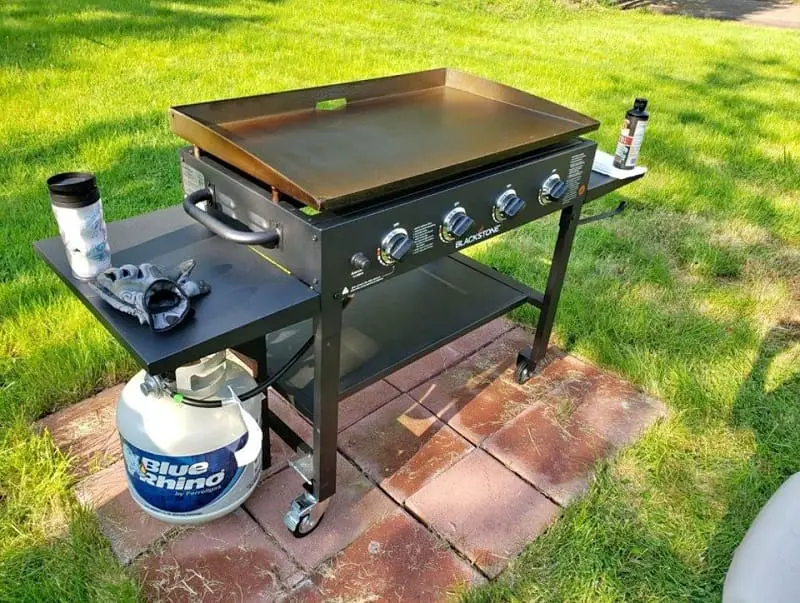
A Blackstone griddle is a tool that is quite popular among cooking enthusiasts. However, a common question is whether you can overheat a Blackstone griddle.
Based on factual data, it is possible to overheat a Blackstone griddle if it exceeds its maximum temperature of 650°F. Typically, a Blackstone griddle can reach over 600°F and even 700°F when set on high, which can cause overcooking, undercooking, or burning of food. Hence, using an infrared or LED food thermometer is recommended to monitor the temperature continually and prevent overcooking or burning of food.
Additionally, it is essential to understand the heat zones of the griddle by observing areas where food cooks faster or using a thermometer. Knowing your griddle’s heat zones, you can cook more efficiently, preventing undercooking or overcooking.
In conclusion, while Blackstone griddles cannot overheat in the literal sense, it is important to monitor the temperature level to avoid overcooking or burning your food.
How Can You Get Your Blackstone Griddle Hotter?
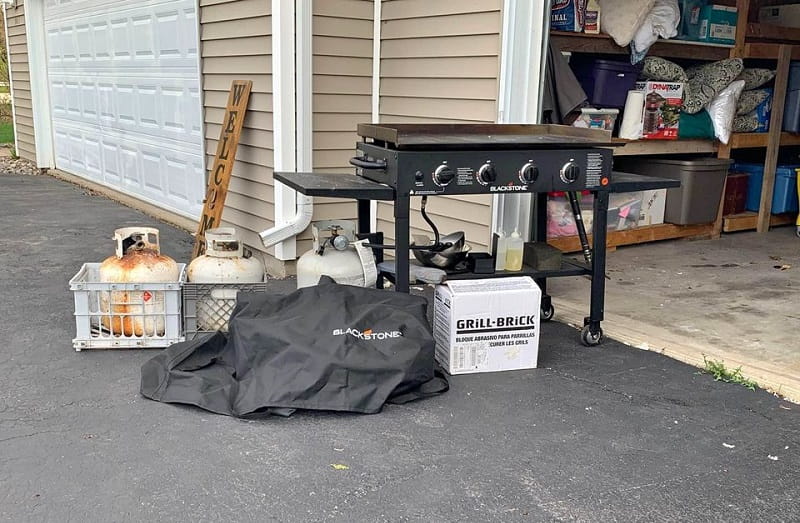
What if your Blackstone griddle isn’t heating up as much as you’d like? Don’t worry; there are a few things you can do to get your griddle hotter and ready to cook up a storm. Here are some tips that have worked wonders for me:
Use Wind Guards on Your Griddle
One of the biggest culprits of a cooler griddle is wind. Wind can cool the surface of your griddle and make it difficult to achieve that perfect sear. Fortunately, Blackstone griddles come with wind guards that can be attached to the sides of the griddle. These guards create a barrier to protect your griddle from wind and help it maintain a consistent temperature. Make sure to use these guards every time you cook, and you’ll notice a significant difference in how hot your griddle gets.
Use the Griddle in Suitable Weather Conditions
While wind guards help, using your Blackstone griddle in suitable weather conditions is important. If it’s too cold outside, your griddle may struggle to get hot enough. If it’s too hot outside, your griddle may struggle to maintain a consistent temperature. Use your griddle in temperatures between 50-90 degrees Fahrenheit for optimal performance. If you’re cooking in extreme temperatures, you may need to adjust your cooking times and temperatures accordingly.
Modify Your Blackstone Griddle
If you’re still having trouble getting your Blackstone griddle hot enough, it may be time to modify it. There are a few modifications you can make to your griddle to improve its performance, including:
- Installing a heat deflector: A heat deflector can be placed under the griddle to help distribute heat more evenly.
- Adding a second propane tank: Adding a second propane tank can increase the heat your griddle produces.
- Upgrading to a higher BTU burner: A higher BTU burner can produce more heat and help your griddle get hotter.
These modifications may require some DIY skills, but they can be well worth it if you’re serious about getting your Blackstone griddle hotter.
How Often Do You Flip Your Food When Searing Or Sautéing?
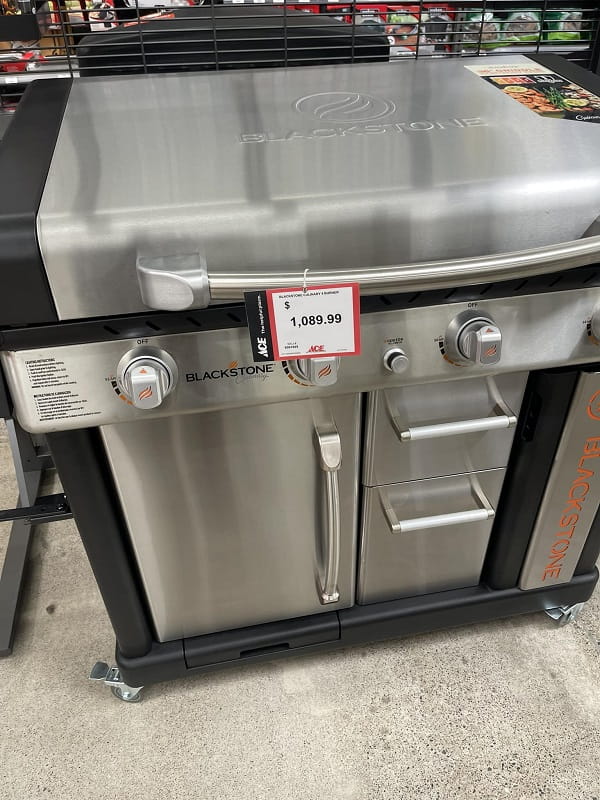
When searing or sautéing food, it is important to flip it in the pan to ensure even cooking frequently. With searing, the goal is to brown only the surface of the food, so flipping it frequently will prevent the interior from cooking too quickly. This technique also helps to develop the desired crust on the meat or fish. Sautéing involves cooking food fully, so flipping it helps to ensure that it does not overcook or burn.
Shake the pan back and forth to flip the food and keep it in motion while sautéing. While both techniques use a frying pan or skillet, sautéing is better suited for a pan with sloping sides, while searing can be done in any pan. Choosing the right oil or fat with a high smoke point is essential to avoid burning your food. Remember, cooking is all about transferring heat; frequent flipping can help achieve your desired texture and flavor.
Why is My Blackstone Griddle Too Hot on Low?
The Blackstone griddle is a popular outdoor cooking tool enthusiasts use for culinary experiments. However, some users have reported that their griddle gets too hot even on the lowest setting. This is a common issue among griddle owners, and there are several reasons why this might be happening.
According to experts, one of the primary causes of temperature fluctuation is the volume of food being cooked on the griddle. When cooking for a large group of people, the surface area of the griddle is usually covered, causing the temperature to rise even on low heat.
Another possible reason for the temperature fluctuation is the type of food being cooked. If the food is cold, the griddle may take longer to heat up, and the temperature will fluctuate until the food reaches the optimal temperature. Therefore, users are advised to preheat their griddles on low heat before cooking anything.
Additionally, they should invest in an instant-read thermometer to monitor the griddle’s temperature and adjust the knobs accordingly to keep the temperature steady. Understanding the nuances of griddle cooking temperatures can help users achieve optimal results and enjoy delicious meals on their Blackstone griddles.
Is It Safe To Cook Directly Over High Temperatures On A Blackstone Griddle?
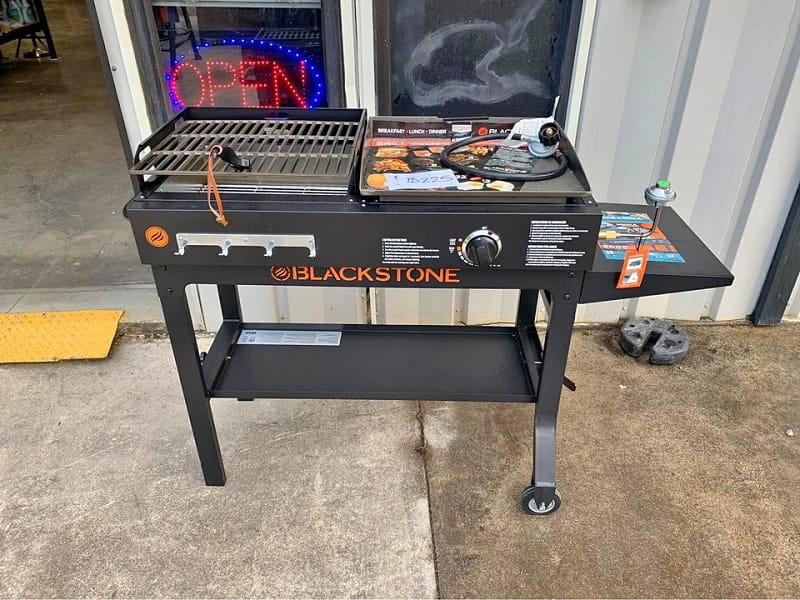
When cooking on a Blackstone griddle, many wonders if cooking directly over high temperatures are safe. According to factual data from Blackstone Products, their gas griddles can reach over 650F under ideal conditions, but cooking at this high temperature is rarely necessary. Instead, cooking at temperatures between 300F (Low Medium) and 375F-400F (Medium-High) is recommended to ensure consistently wonderful results. The Maillard reaction, which occurs when food comes into contact with temperatures between 280F-330F, can make food more delicious.
Searing and sautéing are the two most common griddle cooking methods, and flipping the food is necessary for both methods but requires different frequencies. Sweating food is also possible on the griddle, allowing vegetable flavors to draw out without browning. Fluctuating griddle temperatures are inevitable due to various factors such as the volume and temperature of the food being cooked, and it’s best to gauge the temperature by how the food reacts and invest in an instant-read thermometer for an accurate reading.
How Can I Control The Temperature Range Of My Blackstone Griddle?
Controlling the temperature range on a Blackstone griddle can seem challenging, but it’s quite simple. Blackstone Products says their gas griddles can reach over 650F, but the ideal temperature range for cooking on a griddle is between 300F and 375F-400F. The Maillard reaction, which enhances the flavor of foods, occurs when food comes into contact with temperatures between 280F-330F. Therefore, avoiding exceeding the ideal temperature range for cooking on a Blackstone griddle is important.
To gauge the temperature of the griddle surface, one can observe how the food reacts. Adjusting the knobs on the griddle may be necessary as the temperature can fluctuate due to the volume of food being cooked and the temperature of the food. It’s also recommended that one preheats the flat top grill on low to prevent warping. To ensure even cooking on a griddle, flipping the food can be done once for thicker cuts and a few times for thinner ones while sweating vegetables on a griddle can be achieved by cooking them slowly.
By keeping these tips in mind, one can control the temperature range of their Blackstone griddle and enjoy consistent, flavorful meals every time.
What Are The Most Common Griddle Cooking Methods?
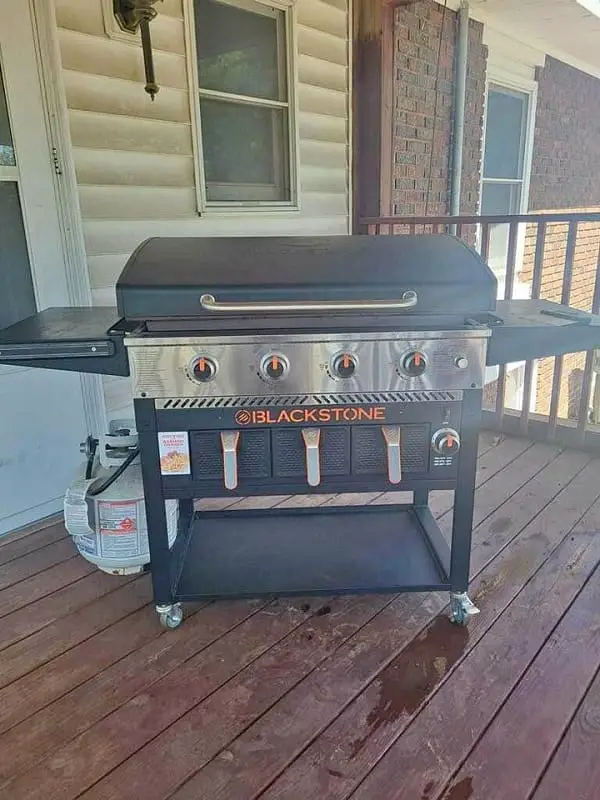
There are two primary approaches regarding griddle cooking methods: grilling and riddling.
Grilling involves cooking over an open grate heated by charcoal, gas, or an electric element. Cooking on a grill requires careful monitoring to ensure even cooking and prevent burning. The distinct grill markings that result from the cooking process contribute to the unique flavor of grilled foods.
Conversely, griddling involves cooking on a dry surface that may or may not require a small amount of fat. Griddling can be done on an electric griddle or a cast iron griddle on top of a stove burner. Oiling the griddle surface after every use is important to maintain its longevity. Scraping the grill surface after each food item is cooked or shifted helps prevent sticking and preserve the griddle. Preheating the cooking surface on low or medium-low heat is a better practice than starting on high, as it is unnecessary and may cause warping.
Cooking on a flat-top grill can be daunting for some, but with these tips, one can become a griddle master in no time.
Tips And Tricks To Maintain Consistent High Temperatures On A Blackstone Griddle
Maintaining consistent high temperatures on a Blackstone griddle is essential to achieving perfect griddle-cooked food. To do this, there are some tips and tricks to keep in mind.
- Firstly, it is essential to know that Blackstone griddles can reach over 650F, but cooking at such high temperatures is unnecessary. Instead, cook at temperatures between 300F (Low Medium) and 375F-400F (Medium-High) for consistently wonderful results. This is because the Maillard reaction that browns food and makes it more delicious occurs when food comes into contact with temperatures between 280F-330F.
- Another important tip is to preheat the griddle on low to prevent warping and to learn to gauge the temperature of the griddle by how food reacts rather than relying on an accurate temperature reading.
- Flipping food at the right time is vital; using an instant-read thermometer for the best results.
- Techniques such as searing and sauteing can be used depending on the type and thickness of the food being cooked, and to sweat foods on the griddle, vegetables should be cooked over lower heat to draw out flavors without browning.
Following these tips and tricks, a Blackstone griddle can consistently maintain high temperatures and deliver delicious griddle-cooked meals.
How Does Wind Affect A Blackstone Griddle’s Temperature?
The wind can significantly impact the temperature of a Blackstone griddle. Strong winds can cause the temperature to decrease or even extinguish the flames while cooking.
To prevent this, Blackstone offers wind guards hooked over the edge of the griddle top to deflect the effects of wind. It is important to note that wind guards are not optimized for units with hoods.
Additionally, cooking on a high-heat and low-wind day is optimal for achieving desired temperatures. It is also essential to check that all burners are on and working correctly, as the wind can blow out a burner.
Using wind guards, waiting for optimal weather conditions, and ensuring all burners are working are all effective ways to combat the negative effects of wind on a Blackstone griddle’s temperature.
What Is The Maillard Reaction, And Why Is It Important For Griddle Cooking?
The Maillard reaction is a complex chemical process of exposing proteins and sugars to heat, resulting in new flavors, aromas, and colors. The “flavor reaction” is the key source of the delicious, complex flavors in cooked foods like meat, seafood, and baked goods.
The Maillard reaction is especially important for griddle cooking, where high heat and rapid dehydration allow the reaction to occur quickly, resulting in a seared and flavorful surface without overcooking the food’s interior.
The reaction occurs when the right combination of temperature, moisture, and time can be manipulated by adjusting these variables. Although the Maillard reaction occurs in almost all foods, the specific amino acids and simple sugars in each food create distinct and unique flavors.
FAQs
What Fuel Is Best For Maximizing Maximum Temperatures On A Blackstone Griddle?
While Blackstone griddles are designed to run on propane gas, some users have reported achieving higher temperatures when using natural gas. This is because natural gas has a higher heating value, producing more heat per unit of fuel than propane. However, it’s important to note that natural gas requires a dedicated gas line to your outdoor cooking area, whereas propane can be stored in a tank and easily transported.
So, if you want to reach the highest temperatures on your Blackstone griddle, consider using natural gas, but be prepared to invest in a gas line installation. Alternatively, stick with propane and focus on other factors like griddle placement and weather conditions to optimize your grilling experience.
How Often Should I Clean And Maintain My Blackstone Griddle For Optimal Performance At High Temperatures?
Regular cleaning and maintenance are crucial for optimal performance at high temperatures of a Blackstone griddle. It is recommended to clean the griddle after each use, utilizing hot water and a scraper to remove any food debris or grease stains. A mild detergent can be used for tougher stains but should be rinsed thoroughly afterward. The griddle should be dried immediately after cleaning to prevent rust or discoloration.
In terms of seasoning, applying oil after every use is recommended to maintain the non-stick surface and prevent rust. The griddle should be seasoned before its first use and periodically throughout its lifetime. Additionally, the griddle should be stored in a cool, dry place with a cover to protect it from scratches, dust, and harsh weather elements. Following these maintenance guidelines will ensure the longevity and optimal performance of the Blackstone griddle.
Is Blackstone Griddle Cast Iron?
The Blackstone Griddle is not completely made of cast iron. Rather, it is usually constructed from cold-rolled steel, specifically chosen for its sturdiness and resistance to warping. Despite this, some Blackstone models may feature elements or accessories made of cast iron, such as grates or burners. It is important to take care of your griddle by following proper procedures to avoid rust, chipping, flaking, and losing its non-stick surface.
Can You Use Pans On The Blackstone Griddle?
The answer is yes when using pans on a Blackstone griddle but with some considerations. The griddle produces heat that can reach as high as 500 degrees Fahrenheit, making it suitable only for cast-iron pans. While the main purpose of a Blackstone griddle is to cook directly on its surface, there may be times when using a pan is advantageous, such as when cooking something quickly or when the griddle needs to be cleaned. Cleaning a cast-iron skillet is easier and less time-consuming than cleaning the griddle.
Cast-iron pans are also excellent heat distributors, browning meat better and retaining heat for extended periods. They also have unmatched heating properties, making them useful for searing meat to create char and pan-roasting food. Additionally, cast-iron pans are heavy-duty and resilient, lasting long if taken care of properly. Using a cast-iron pan on a Blackstone griddle for different cooking purposes, including boiling, frying, sautéing, and roasting, can make cooking more versatile.
What Is Searing, And When Do You Use It For Griddle Cooking?
Searing is a cooking technique that involves searing the surface of a protein, such as meat or chicken, with high heat to achieve a flavorful, crusty texture. This process is achieved by heating the meat to temperatures between 300 and 500 degrees Fahrenheit, causing the sugars and amino acids to react and create the Maillard reaction or caramelization. It is essential to note that searing does not seal in the juices, as once believed but instead provides a desirable texture and flavor.
One can apply these techniques to all types of beef, including New York strip steak, filet mignon steak, porterhouse steak, sirloin steak, and chuck steak.
What Is Sautéing, And When Do You Use It For Griddle Cooking?
Sautéing is a stovetop cooking technique that involves cooking food in a small amount of fat in a frying pan. The technique is used primarily for smaller cuts of meat and vegetables and is great for dishes like chicken or steak fajitas or smaller seafood like shrimp or bay scallops.
To sauté, one requires a skillet and cooking oil, preferably with a high smoke point. A skillet with curved edges, such as a sauté pan, is better than a flat skillet, as it allows for easy food flipping in the pan. Choosing the right oil for a dish is also crucial, and the best oil for the job largely depends on what you’re cooking. Its results are fast, producing healthy, tasty meals when done correctly.
What Is Sweating Food, And How Can You Use This Technique On A Blackstone Griddle?
Sweating food is a cooking technique where vegetables are slowly cooked over low heat to draw out their flavors without browning. This is particularly useful when making dishes like fried rice on a Blackstone griddle where the vegetables are on the team but not necessarily the star player.
To sweat food on a Blackstone griddle, the heat should be set to a lower temperature, and a small amount of oil can be used to prevent sticking. Once the vegetables are added to the griddle, they should be stirred occasionally to avoid burning. Sweating food on a Blackstone griddle can help enhance the flavors of dishes and provide a tasty and healthy alternative to oil-based cooking techniques.
How Does The Size Of A Blackstone Griddle Affect Its Heating Time?
The size of a Blackstone griddle affects its heating time. A bigger cooktop takes longer to heat up than a smaller one. For instance, a 17-inch Blackstone griddle takes 8 minutes to reach its maximum temperature of 640 degrees Fahrenheit, while a 28-inch Blackstone griddle reaches 635 degrees Fahrenheit in 8.5 minutes. The largest version, the 36-inch Blackstone griddle, takes an average of 9 minutes when set on high to reach 500 degrees Fahrenheit.
The weather conditions also play a role in the heating time, as a griddle will take longer to heat up outside in cold or windy weather. Understanding the heating time of a Blackstone griddle is important for efficient cooking, accurate temperature monitoring, and preventing undercooking or burning of food.
Conclusion
In conclusion, the answer to the question “How hot does a Blackstone Griddle get?” is that it depends. However, most models are capable of reaching temperatures of up to 500-570 degrees Fahrenheit, which is plenty hot enough for most cooking applications. Just remember to adjust the temperature based on what you’re cooking, and you’ll be able to whip up delicious meals in no time.
References:
- https://blackstoneproducts.com/blogs/griddling-tips-tricks/best-temperature-griddle
- https://www.seriouseats.com/what-is-maillard-reaction-cooking-science
- https://www.nytimes.com/2014/09/24/dining/the-fundamentals-of-pan-frying-sauteing-and-searing.html

Hey readers! Chip Holland here, and I’m a Manager of this website. My passion for writing about it only matches my passion for BBQ. Follow my blog for mouth-watering recipes, tips, and tricks for the perfect smoke, grill, and BBQ. I’m sure you won’t be disappointed!
